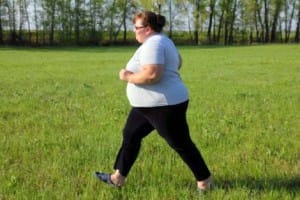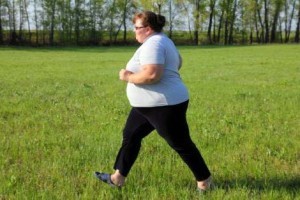 Can the benefits of exercise be explained in a particular way to encourage people who are obese and overweight to exercise more? New research amongst American college students suggests that in fact, people who are overweight and obese respond differently to messages focussing on the gains that can be made as a result of exercise instead of describing the consequences of not exercising.
Can the benefits of exercise be explained in a particular way to encourage people who are obese and overweight to exercise more? New research amongst American college students suggests that in fact, people who are overweight and obese respond differently to messages focussing on the gains that can be made as a result of exercise instead of describing the consequences of not exercising.
Gain-framed and loss-framed messaging
Gain-framed messages focus on benefits associated with performing a particular behaviour. An example of a gain-framed message is, “Brush your teeth regularly for clean teeth and fresh breath.” In contrast, loss-framed messages highlight the expected negative consequences of not performing a particular behaviour. An example of a loss-framed message is, “If you don’t brush your teeth, you won’t have clean teeth or fresh breath.”
Both statements contain the same information, but the subtle structuring of the messages may influence how people respond.
Weight loss, risk and behaviour change
Until this study was published, the results on how college students responded to gain and loss-framed messages about exercise were mixed, and no studies considering the body mass index of students as a factor had been conducted. Researchers wondered if those mixed results might be explained using a concept known as prospect theory.
Prospect theory suggests that the effectiveness of framing messages from a gain or loss perspective depends on the level of risk perceived in relation to undertaking a particular behaviour.
Loss-framed messages – describing the negative consequences of not doing something – appear to be more effective when encouraging behaviour that is perceived to be risky. This means loss-framed messages are particularly effective for health screening, such as screening for breast cancer. On the other hand, gain-framed messages seem to be most effective when there is little perceived risk as a result of performing the behaviour – such as undertaking preventative health measures and or participating in rehabilitation.
The authors of this study sought to understand if people with a higher body mass index responded differently to gain and loss-framed exercise messages than others. They wondered if the experience of exercise for people who were overweight and obese might increase the perceived risk of physical activity and therefore be contributing to lower levels of physical activity amongst this group.
Study design
Students at an American university were recruited to participate in the study. Participants were undertaking less than the recommended amount of physical activity but intended to start exercising regularly in the next 1 to 6 months. They were grouped by BMI range (under 25, and 25-35) and then randomly assigned to groups either receiving gain-framed or loss-framed messages.
Method
During an exercise information session, the participants were delivered messages about exercising, including types of exercise and safe exercise guidelines. The gain-framed group were explained the benefits of exercise: for example, achieving better sleep quality, help with managing stress and improved life expectancy. The loss-framed group were provided the same information but explained that not exercising was a lost opportunity to improve sleep quality, manage stress or extend life expectancy. Participants were then provided with a two-hour exercise instruction session in the campus fitness centre and their exercise habits were monitored for 14 days. Researchers measured fitness centre use, total cardiorespiratory activity, and strength training.
Results
At the start of the study, participants on average attended a fitness centre less than once per week, completed 47 minutes of cardiovascular activity and 1.3 strength training exercises.
Obese and overweight participants in the gain-framed group:
- Significantly increased their fitness centre use
- Significantly increased their cardiorespiratory activity
- Significantly increased their strength training activity
All other participant groups did not significantly increase activity or fitness centre use over the study period, with one exception: participants with a healthy BMI in both loss-framed and gain-framed groups significantly increased their strength training activity.
This study indicates that people who are overweight and obese respond positively to gain-framed messages about exercise. Further research is required to confirm the results from this study, however these findings have significant implications for weightloss professionals seeking to encourage their overweight and obese clients to increase their physical activity.
Reference:
Kozak, A. T., Nguyen, C., Yanos, B. R., & Fought, A. (2013). Persuading Students to Exercise: What Is the Best Way to Frame Messages for Normal-Weight Versus Overweight/Obese University Students? Journal of American College Health, 61(5), 264–273.

